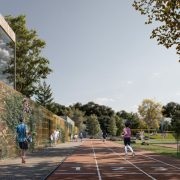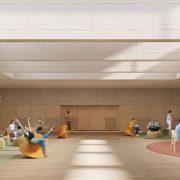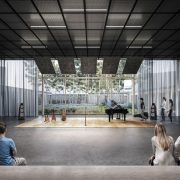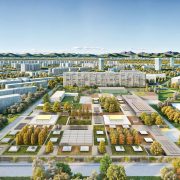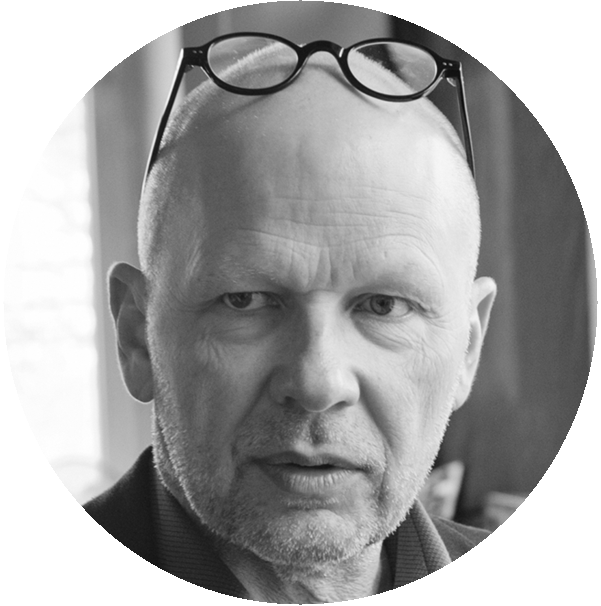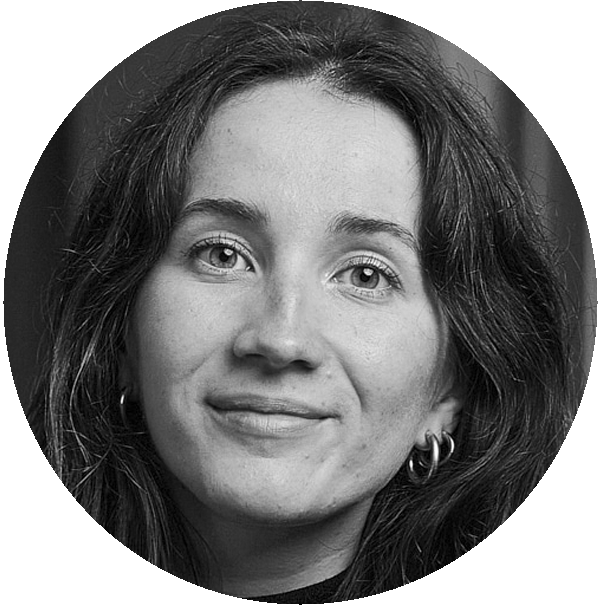FUTURE SCHOOL FOR UKRAINE
ADAPTIVE PROJECT DESIGN FOR BUILDING SCHOOLS ACROSS UKRAINE
PROJECT VISION
It will provide a ready-to-implement and free-to-use adaptive technical design for building new school hubs across the country. The availability of such solution will save time and financial resources for Ukraine’s school system recovery.
A global architectural competition was held in 2024 to obtain the best quality project. The winning project is now under development and is expected to be completed by the end of 2025.
Lithuanian Fund for the Development Cooperation and Humanitarian Aid allocated €500,000 for the implementation of the project.
WINNER
Scandurra Studio Architettura srl (Italy), in collaboration with Ukrainian architect Mykhailo Vustyansky, won the global “School of the Future for Ukraine” competition.
To address critical needs for accessible, safe, and quality education, the solution is a multifunctional educational and community hub. Hubs will integrate temporary accommodation, community spaces, psychological rehabilitation, and crucial dual-use shelters.
The winning modular school concept integrates the guiding values of the New European Bauhaus: sustainability, inclusivity, and aesthetic design.
Sustainability prioritizes environmental responsibility through energy efficiency; courtyards serve as communal, inclusive hubs; while human-centered aesthetics stimulates learning and well-being.
Adaptable architecture responds to local climate, culture, and community needs, allowing flexibility in scaling and component adaptation for diverse settings (urban, rural and heavily war affected zones).
“Future School for Ukraine” design handbook (PDF, 23MB)
To see all competition entries follow the link
FUTURE SCHOOL FOR UKRAINE AS A PART OF NEW EUROPEAN BAUHAUS
The “Future school for Ukraine“ became an inspiration and the pilot project for a New European Bauhaus Laboratory: Public Infrastructure for Ukraine.
The new Lab will explore and adapt design methodologies for the best public object designs in Ukraine.
The “Future School for Ukraine” will be the first NEB-based educational and community school hub project, showcasing innovative solutions and fostering EU-Ukrainian business partnerships. The site for a new school will be selected transparently with Ukrainian authorities.
The NEB Laboratory will provide peer-to-peer training for Ukrainian architects and specialists, facilitating local adaptation of the project design.
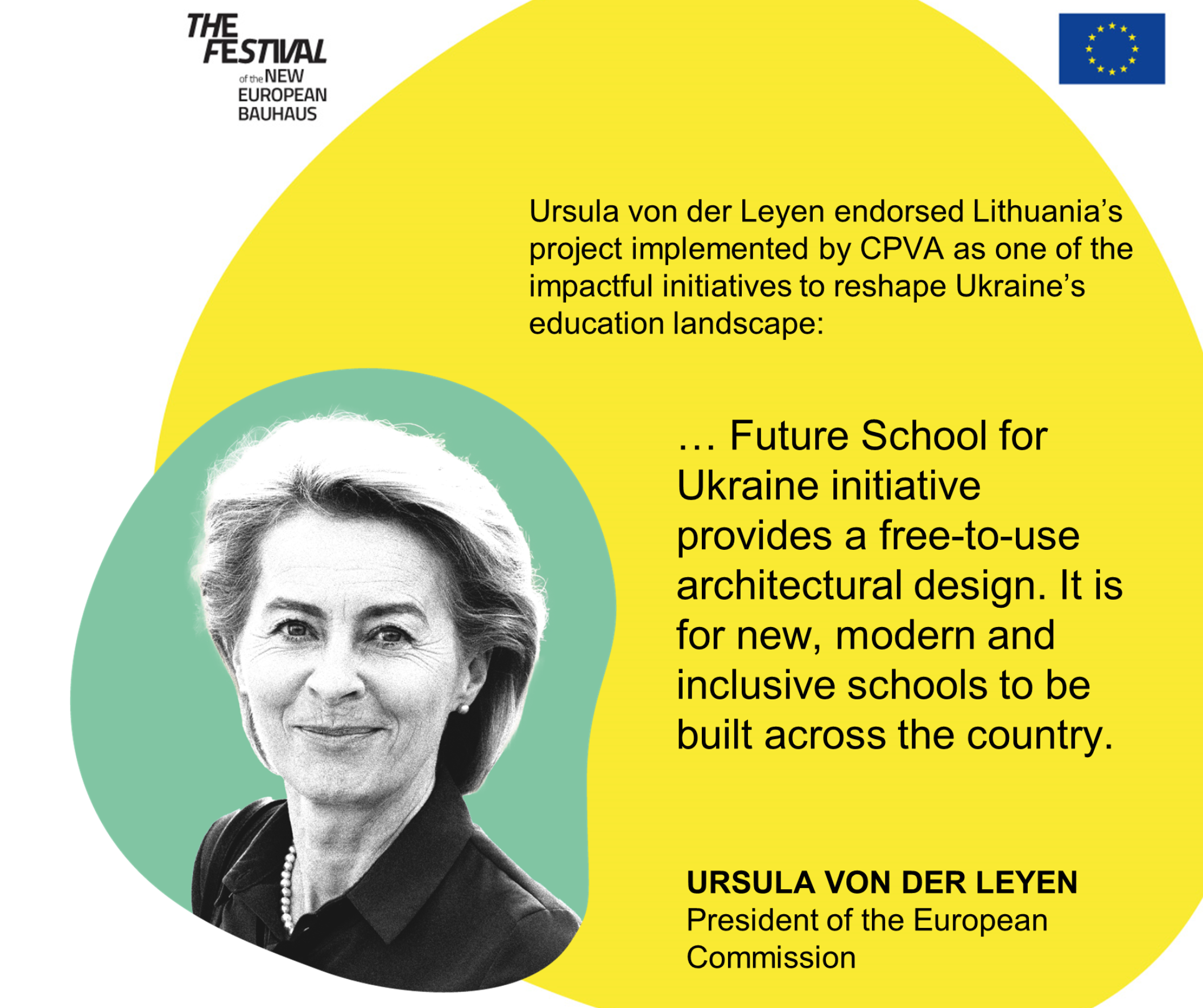
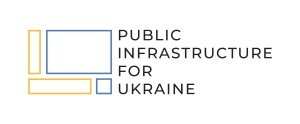
HOW YOU CAN CONTRIBUTE?
Every rebuilt school is an investment in the future.
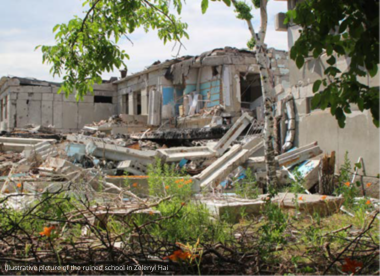 The ongoing war has severely impacted Ukrainian education. Over 4,000 [1] schools are damaged or destroyed and more than 5, 000, 000 [2] children lack safe learning environments.
The ongoing war has severely impacted Ukrainian education. Over 4,000 [1] schools are damaged or destroyed and more than 5, 000, 000 [2] children lack safe learning environments.
To meet current and future educational infrastructure needs, Ukraine will require multi-purpose education centers in regional hubs, covering up to 50 kilometers.
Build innovative, resilient schools with the “Future School of Ukraine” — a ready-to-adjust adaptive project design. With a growing demand for high-quality, adaptable designs for Ukraine’s recovery, we collaborate with the Ministry of Science and Education of Ukraine, DREAM and other UA’s institutions to continuously assess the needs of the education sector. Our data-driven approach ensures that every new school project is grounded in local demands, making a meaningful impact where it’s needed most.
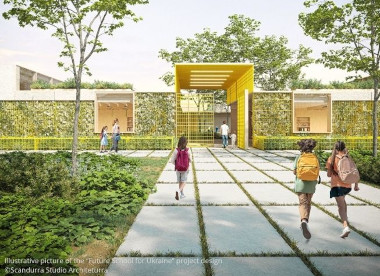 Flexible Contribution Models. You can contribute through a variety of funding mechanisms: international development funds, bilateral aid programs, and other flexible models. One such option is the Fund for Development Cooperation and Humanitarian Aid, which accepts earmarked donations from international partners. The fund allows for joint programming and management of initiatives, offering the flexibility required in war-related circumstances.
Flexible Contribution Models. You can contribute through a variety of funding mechanisms: international development funds, bilateral aid programs, and other flexible models. One such option is the Fund for Development Cooperation and Humanitarian Aid, which accepts earmarked donations from international partners. The fund allows for joint programming and management of initiatives, offering the flexibility required in war-related circumstances.
Public-Private Partnerships. We welcome the involvement of private sector partners through PPP models. Your contribution can make a tangible difference in restoring access to education in Ukraine while enhancing your corporate social responsibility
For cooperation please contact:
Darius Skusevičius
[email protected]
Ambassador-at-Large for Ukraine’s Recovery and Reconstruction
[1] https://saveschools.in.ua/
[2] https://www.unicef.org/ukraine/press-releases/war-has-hampered-education
WINNERS AND PRIZES
1st
1st place – Scandurra Studio Architeturra srl (Italy) in collaboration with Mykhailo Vustianskyi (Ukraine).
Download the 1st place winning project idea
2nd
2nd place – NOVA architectural burro (represented by Pe Danila Bielokopytov, Ukraine) in collaboration with Orange architects (Netherlands),
Download the 2st place winning project idea
To see all competition entries follow the link
3rd
3rd place – Huttunen-Lipasti Architects Ltd (Finland), in collaboration Dmytro Sorokevych (Ukraine)
Download the 3rd place winning project idea
FREQUENTLY ASKED QUESTIONS
How the competition winner was chosen?
A total of 15 projects were submitted to the call for proposals. Participants from Italy, Finland, Portugal, the UK, Lithuania, Japan, Germany, France, and Netherlands took part in the competition.
They were evaluated by an international jury of experts, including architects Viktor Zotov (Ukraine), Carl Backstrand (Sweden), Helena Sandman (Finland), Viktorija Blažienė and Rolandas Palekas (Lithuania), Ana Novosad, former Minister of Education of Ukraine and founder of the NGO savED, and Artūras Žarnovskis, head of the programme “Co-Create Future of Ukraine”. All the projects in the competition were evaluated based on five criteria: the quality of the architectural idea, its adaptability, functionality, sustainability and the cost of design services. The first prize-winning project, prepared by a joint Italian-Ukrainian architectural team, focuses on the efficient use of materials and rational construction solutions to make the most efficient use of funds.
The materials used in the modular construction can be reused, which makes the construction more sustainable, and the layout of the school itself will also allow the various spaces within the school grounds to be used for a variety of community uses such as events, meetings and trainings.
How the project brought together local and global expertise?
Participants from Italy, Finland, Portugal, the UK, Lithuania, Japan, Germany, France, and Netherlands took part in the competition.
The vision of the Future School for Ukraine project and competition brief was developed with more than 20 Lithuanian and Ukrainian architecture and education experts during a two-day workshop in Vilnius. Experts defined the tasks according to the data from the Ministry of Science and Education of Ukraine, NGO’s and feedback from Ukrainian communities. As a result, a school project design accepted the concept of multifunctional educational center that accommodates up to 550 children from primary to high school, with facilities for students’ and teachers’ temporary accommodation, spaces for community activities, psychological rehabilitation, and a bomb shelter.
A team, entering the competition, was required to have at least 1 architect, who has a right to practice in Ukraine and at least 1 architect, who has a right to practice outside Ukraine.
Architects were introduced to the Arche-E platform, where they could register themselves to be visible for possible partners, and find the partners for the project.
During its competition phase CPVA team and Lithuanian Union of Architects organized Online Workshop “Cross-Border Networking for Architects: Practice, Platforms, Projects” with more than 70 participants from Europe and Ukraine, explaining project details and impact and facilitating the international cooperation for the teams from Ukraine and worldwide.
In April 2024 CPVA Future School for Ukraine participated in NEB Festival in Brussels, presenting the initiative to the wide audience of European, architects, urbanists, activists and politicians. At the opening of #NewEuropeanBauhaus, Ursula von der Leyen endorsed Lithuania’s “Future School for Ukraine” as one of the impactful initiatives reshaping Ukraine’s and European landscape.
What is an adaptive design?
Adaptive reuse architectural design means an architectural work, a set of architectural solutions for a building design featuring maximum solutions for the site, the interior and the exterior of the building, which can be applied independently of the specific target site or location, and could be re-used, in adapted form, for multiple different locations, each time by individually integrating and adapting it to the local context.
As the aim of the competition was to obtain the idea for an adaptive reuse architectural design, a specific site was not provided at the competition stage. In order to identify the volumetric and spatial adaptability of the proposals and the outdoor area solutions, three hypothetical sites with different characteristics were provided in the procurement documentation.
How can I receive the ready Future School for Ukraine project design?
Technical project design is being developed by the winning team Scandurra Studio Architeturra srl (Italy) in collaboration with Mykhailo Vustianskyi (Ukraine). Download the “Future School for Ukraine” design handbook (PDF, 23MB).
NEWS
EVALUATION JURY OF THE FUTURE SCHOOL FOR UKRAINE ARCHITECTURAL COMPETITION
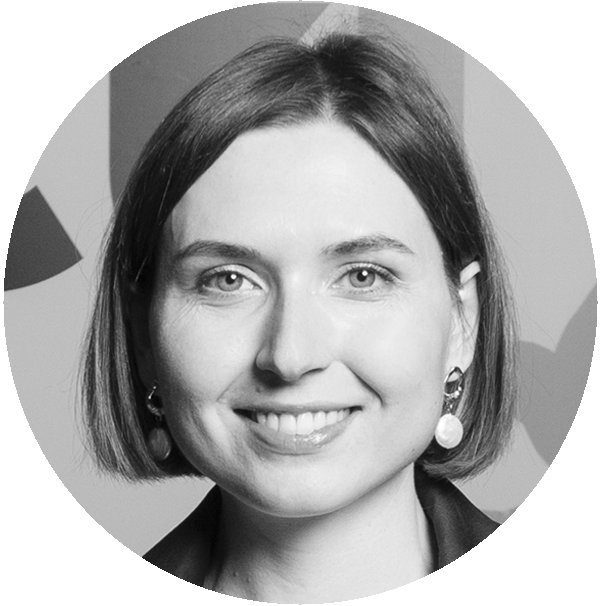
Anna Novosad (Ukraine)
Co-founder of SavED, Minister of Education and Science of Ukraine 2019-2020; expert in education policy
Helena Sandman (Finland)
Architect; D.A., visiting lecturer at Illinois UniversityGLOBAL COMPETITION ENTRIES
We invite you to explore them by clicking this link to the page Entries >>>

